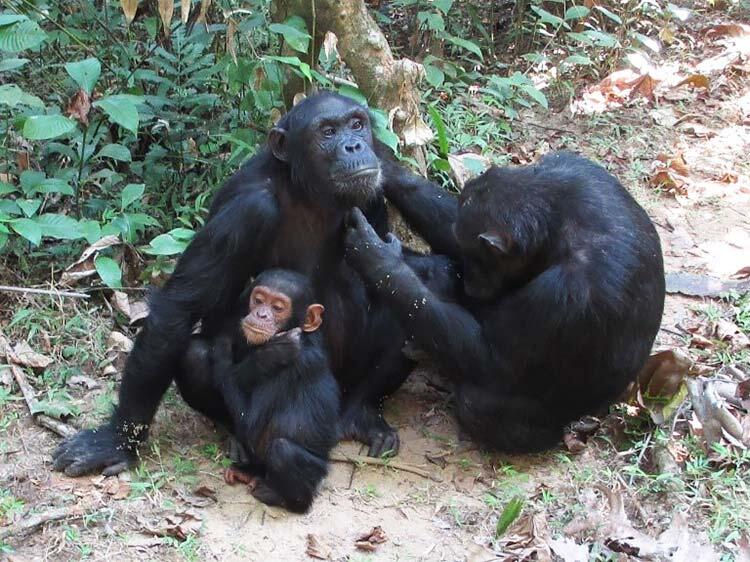In patrilineal chimpanzee society, typically a female brought up in one group would leave to mate in another group. However, it has now been discovered that remaining in the natal group and having offspring there is not uncommon. The research was published by a research group including Kyoto University. This is a finding applicable to the understanding not just of chimpanzees but of the social structures of all animals, including humans.

In 2013 and 2014, the research group followed two female chimpanzees giving birth in their own natal group from an identified group of wild chimps in Mahale Mountains National Park, Tanzania. They analyzed them together with five chimps who had exhibited the same behaviors in the group from 1993 to 1998. Detailed observation and investigation found that likely factors in females remaining with their natal group were (1) less fighting over food as a result of fewer chimps in the group or an improved habitat, (2) assistance in raising offspring from mother or other close female companion, (3) another friendly female of similar age stayed in the group too and (4) giving birth at a relatively young age.
No females remained in the group during the intervening years 1999 to 2012, but in fact this was a period when very few females reached sexual maturity. Further, an investigation of long-term survey data from five locations founds that there were females remaining with their groups everywhere.
Based on these findings, the research group concluded that while chimpanzee groups are patrilinear overall, females giving birth within their own natal groups are not necessarily exceptional, and rather this is something more typical than suggested by the accepted view. Rather than a black and white situation regarding the question of whether males or females leave their group, it is likely that a re-evaluation is in order. However, further studies will be required, due to the insufficient number of cases studied if we are to conclude that females remaining in their groups is a widespread phenomenon, and why.
Note that one of the two chimps under observation eventually mated with her older brother later in her estrous cycle when she was likely to be ovulating. It was thought that females would leave the group to avoid in-breeding, but from this case, we can surmise that while this may indeed be the outcome in overall chimpanzee society, individual females do not display avoidance behavior in this regard and therefore it is not necessarily a proximal factor.
Among the social mammals, either the males or the females disperse from the group they grew up in. This has the advantages of avoiding in-breeding, prevents fighting over food with close relatives and allows the selection of a better partner in terms of resources and reproduction. On the other hand, the disadvantages include that they miss out on the assistance of close relatives and unfamiliarity with the new hunting grounds. It was held that among chimpanzees and spider monkeys it was the females that left the group, with the remainers being the exception. Japanese macaques, meanwhile, were known for male dispersal.
Visiting researcher at the Research Institute for Humanity and Nature, Takuya Matsumoto (evolutionary anthropology), states, "It seems that female chimpanzees have some degree of choice. Looking at other species where this has been seen as the exception, we should be able to gain more understanding of animal communities, including people. This is extremely interesting, as we are investigating the kinds of communities that gave birth to the shared ancestors of chimpanzees and humans."
The research group is made up of Kyoto University, the Research Institute for Humanity and Nature, Rakuno Gakuen University, Hokkaido University and Toho University. Its findings have been published in the international online primatology journal Primates.
Original article was provided by the Science Portal and has been translated by Science Japan.




